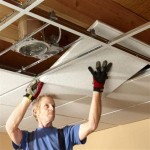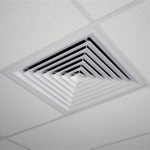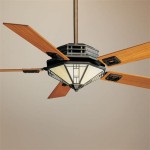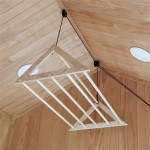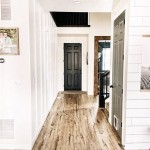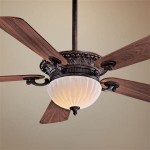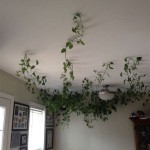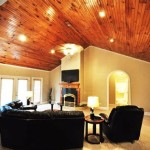Front Door Ceiling Design: Enhancing Curb Appeal and Functionality
The ceiling above a front door, often referred to as a porch ceiling, soffit, or entryway ceiling, plays a crucial role in the overall aesthetic appeal and practical functionality of a home's exterior. Its design is not merely an afterthought; rather, it is a significant architectural element that can elevate the curb appeal, protect the entry area from the elements, and contribute to the home's overall architectural style.
A well-designed front door ceiling can create a welcoming ambiance for guests, provide shelter from rain and sun, and enhance the perceived value of the property. Conversely, a neglected or poorly designed ceiling can detract from the home's appearance and potentially lead to structural issues over time due to water damage or insect infestation. Therefore, careful consideration should be given to the design and selection of materials for this often-overlooked area.
Numerous factors influence the design and construction of a front door ceiling, including the architectural style of the house, the desired aesthetic, the budget, and local climate conditions. The following sections will explore key aspects of front door ceiling design, providing a comprehensive overview of materials, styles, and considerations for homeowners and builders.
Material Selection for Front Door Ceilings
The choice of materials for a front door ceiling is paramount, as it directly impacts the ceiling's longevity, maintenance requirements, and aesthetic appeal. The materials must be weather-resistant, durable, and compatible with the overall architectural design of the house. Several common materials are used, each with its own advantages and disadvantages.
Wood is a classic and versatile material that offers a warm and inviting aesthetic. Popular wood choices include cedar, redwood, and pressure-treated lumber. Cedar and redwood are naturally resistant to decay and insects, making them ideal for outdoor applications. Pressure-treated lumber is treated to resist rot and insect damage, extending its lifespan. Wood ceilings can be painted, stained, or left natural, providing a wide range of design options. However, wood requires regular maintenance, such as painting or staining, to protect it from the elements and prevent warping or cracking.
Vinyl is a low-maintenance and cost-effective alternative to wood. It is resistant to moisture, insects, and rot, making it a durable option for outdoor use. Vinyl ceilings are available in a variety of colors and styles, including those that mimic the look of wood. They are easy to clean and require minimal upkeep. However, vinyl may not have the same aesthetic appeal as natural wood and can be susceptible to fading or cracking in extreme temperatures.
Aluminum is a lightweight and durable metal that is resistant to rust and corrosion. Aluminum ceilings are often used in coastal areas where exposure to saltwater is a concern. They are available in a variety of colors and finishes, and can be powder-coated to match the house's exterior. Aluminum is a low-maintenance material that is easy to clean. However, it can be more expensive than other options and may not provide the same warmth and character as wood.
Fiber cement is a composite material made from cement, sand, and cellulose fibers. It is durable, fire-resistant, and resistant to rot and insects. Fiber cement ceilings can be painted to match the house's exterior and are available in a variety of textures and styles. Fiber cement is a relatively low-maintenance material, but it can be more expensive than vinyl or wood.
Depending on the regional climate, moisture is a major factor in the longevity of ceiling materials. Humid climates might necessitate pressure-treated lumber, composite materials, or well-ventilated designs. Arid climates may allow for a wider range of wood options but still necessitate protection from intense sunlight.
Styles and Designs for Front Door Ceilings
The style and design of a front door ceiling should complement the architectural style of the house and reflect the homeowner's personal preferences. There are numerous design options available, ranging from simple and functional to ornate and decorative.
A flat ceiling is the simplest and most common type of front door ceiling. It is typically constructed using plywood or tongue-and-groove boards and can be painted or stained to match the house's exterior. Flat ceilings are easy to install and maintain, making them a cost-effective option. They are well-suited for modern and contemporary homes with clean lines and minimalist aesthetics.
A vaulted ceiling creates a sense of spaciousness and adds architectural interest to the entryway. Vaulted ceilings can be constructed using a variety of materials, including wood, drywall, or plaster. They are often used in homes with a more traditional or formal architectural style. Vaulted ceilings can be more expensive to construct than flat ceilings, but they can significantly enhance the visual appeal of the entryway.
A shed ceiling slopes downward from the house to the outer edge of the porch. This design provides excellent drainage and is often used in areas with heavy rainfall. Shed ceilings can be constructed using a variety of materials, including wood, metal, or asphalt shingles. They are a practical and functional option for homes in wet climates.
A tongue-and-groove ceiling features narrow planks of wood that are interlocked together. This creates a seamless and visually appealing surface. Tongue-and-groove ceilings are often used in homes with a rustic or farmhouse-style aesthetic. They can be stained or painted to match the house's exterior. The installation requires precise alignment of the boards to prevent gaps and ensure a smooth finish.
Beadboard ceilings feature narrow vertical grooves that add texture and detail to the ceiling. This style is often used in homes with a traditional or Victorian architectural style. Beadboard ceilings can be painted or stained to match the house's exterior. Proper sealing is crucial to prevent moisture from penetrating the grooves.
Tray ceilings feature a recessed center section that is often decorated with decorative trim or lighting. This design adds visual interest and dimension to the entryway. Tray ceilings are often used in homes with a more formal architectural style. The complexity of the framing and finishing may require professional installation.
The design should also factor in the size and scale of the porch area. A small porch may benefit from a simple, uncluttered design, while a larger porch can accommodate more elaborate features.
Enhancements and Considerations for Front Door Ceilings
Beyond the basic structure and style, several enhancements and considerations can further enhance the functionality and aesthetic appeal of a front door ceiling. These include lighting, ventilation, and decorative elements.
Lighting is an essential element of front door ceiling design. Well-placed lighting can improve visibility, enhance security, and create a welcoming ambiance. Recessed lighting is a popular choice for front door ceilings, as it provides a clean and unobtrusive source of light. Pendant lights and chandeliers can also be used to add a decorative touch. The choice of lighting fixtures should complement the style of the house and the overall design of the entryway. Motion-sensor lights can provide added security and energy efficiency. LED lighting options offer longevity and energy savings.
Proper ventilation is crucial for preventing moisture buildup and extending the lifespan of the ceiling. Adequate ventilation can help to prevent rot, mold, and mildew. Soffit vents are often used to provide ventilation for front door ceilings. These vents allow air to circulate through the ceiling cavity, preventing moisture from accumulating. The placement and size of vents should be carefully calculated to ensure adequate airflow.
Decorative elements can further enhance the aesthetic appeal of a front door ceiling. These may include crown molding, decorative trim, corbels, and ceiling medallions. Crown molding can add a touch of elegance and sophistication to the ceiling. Decorative trim can be used to create visual interest and detail. Corbels are decorative brackets that can be used to support the ceiling or add architectural detail. Ceiling medallions can be used to highlight lighting fixtures or add a focal point to the ceiling. These elements should be chosen to complement the style of the house and the overall design of the entryway.
The soffit, which is the underside of the overhanging roof, is an integral part of the front door ceiling design. It must be properly sealed and protected to prevent water damage and insect infestation. The soffit can be constructed from a variety of materials, including wood, vinyl, or aluminum. The choice of material should complement the overall design of the house.
Regular maintenance is essential for preserving the beauty and functionality of a front door ceiling. This may include cleaning the ceiling, repairing any cracks or damage, and repainting or restaining the surface as needed. Periodic inspections can help to identify potential problems early on, preventing costly repairs down the road. Removing debris, such as leaves and twigs, from the ceiling can help to prevent moisture buildup and insect infestation.
In conclusion, the design of a front door ceiling is a critical aspect of home architecture, impacting both aesthetics and functionality. Careful consideration of materials, style, and enhancements can significantly elevate the curb appeal and protect the entryway from the elements. By addressing these key elements, homeowners and builders can create a welcoming and durable front door ceiling that enhances the overall value and enjoyment of the property.

10 Amazing Wooden Ceiling Designs You Will Love For Your Home

Entrance

Portico With Plank Ceiling Design Ideas

5 Modern Main Door Design For The Homeowner

Front Door Barrel Ceiling Design Ideas

50 Entrance Door Design Giving Intrinsic Craftsmanship Goals In Residential Projects The Architects Diary

Entrance Door Homify

Main Entrance Door False Ceiling Design By Mango Interio Kreatecube

Elegant Entry In Black White With A Blue Ceiling Cococozy

Home Gate Design Ideas Floordesign Bedroom Residence Lobby Interior Decor Exterior Workout Exteriors Newhome Finii Designs Interiors Pvt Ltd Call Us 9891361999 Www Finiiinteriors Com
Related Posts

